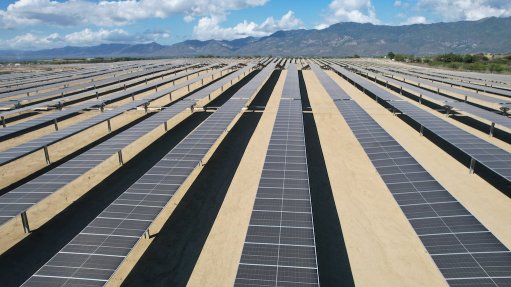Smuggling shenanigans of jumbo proportions
It must have been music to the ears of conservationists when the Convention on International Trade in Endangered Species of Wild Fauna and Flora (CITES) reported in October last year that significant gains had been made in the fight against elephant poaching on the African continent, with the incidence having declined for the fifth consecutive year. Further good news came through early this year, when China, the world’s top ivory consumer, banned all trade in ivory and ivory products.
Experts estimate that, in Africa, poachers kill 20 000 to 30 000 elephants for their ivory every year. Consequently, the continent’s elephant population is now only about 415 000, compared with 515 000 in 2007. One can therefore understand the joy the CITES announcement invoked in conservation circles and among tourism authorities in countries such as Botswana, Tanzania, Zimbabwe, Kenya, Zambia and South Africa, which boast the highest elephant densities on the continent.
According to a study on the financial impact of illegal hunting on African tourism, conducted by the World Wildlife Fund and two overseas universities, the sector loses $25-million each year as a result of elephant poaching. But this figure, the study highlights, is a drop in the ocean when measured against the value of smuggled ivory traded on the Chinese black market, estimated at about $597-million between 2010 and 2012.
CITES attributes the declining incidence of elephant poaching in Africa primarily to significant inroads in East Africa, where illegal killings have fallen to pre-2008 levels. Killings, however, remain “very high” in Central Africa, while the elephant population in our Southern African neck of the woods appears to be stable or increasing.
But developments in this country and in neighbouring Zimbabwe suggest that the two countries still have a big problem on their hands. In January, South African Envi- ronmental Affairs Minister Edna Molewa told reporters that 67 elephants were poached in the Kruger National Park in 2017, with one casualty reported in KwaZulu-Natal. This was a significant jump from 46 in 2016.
Over the past five years, poachers in Zimbabwe have been resorting to the use of lethal chemicals like cyanide to kill elephants. This first came to light in 2013, when 100 elephants were killed in one incident in the Hwange National Park, in the north-west of the country. Such incidents have since become a recurring phenomenon, not only at Hwange, but also in other parts of the country, including the Zambezi Valley and the Gonarezhou National Park, in the south-east lowveld. As recently as October last year, 13 elephants died after poachers had laced a salt lick near the resort town of Victoria Falls with cyanide, bringing the 2017 tally of elephant casualties of cyanide poisoning in the country to 53.
Now it has emerged that the wife of former President Robert Mugabe could have been involved in ivory smuggling from Zimbabwe. Media organisations reported last month that Grace Mugabe was under police investigation for spiriting away large quantities of ivory to China, the United Arab Emirates and the US, among other destinations.
Her alleged modus operandi was to instruct officials to grant her permits to export the ivory – apparently from unknown sources – as gifts to the leaders of the countries of destination. Those who were reluctant to play ball would be threatened with dire consequences and would eventual comply. Once the ivory was outside the country, it would be directed to the black market.
The police have confirmed that their investigations are at an advanced stage and may question the former First Lady shortly. This is the same (Dis)Grace, who, if she was not sjambokking young models with electrical extension cords in South African hotel rooms for allegedly having liaisons with her ‘pious’ sons, would be splurging hundreds of thousands of apparently ill- gotten dollars at the world’s top department stores or accompanying her elderly husband on his never-ending international jaunts. As a proponent of animal rights, I cannot wait for the day when she appears in the dock as Accused Number One.
Comments
Announcements
What's On
Subscribe to improve your user experience...
Option 1 (equivalent of R125 a month):
Receive a weekly copy of Creamer Media's Engineering News & Mining Weekly magazine
(print copy for those in South Africa and e-magazine for those outside of South Africa)
Receive daily email newsletters
Access to full search results
Access archive of magazine back copies
Access to Projects in Progress
Access to ONE Research Report of your choice in PDF format
Option 2 (equivalent of R375 a month):
All benefits from Option 1
PLUS
Access to Creamer Media's Research Channel Africa for ALL Research Reports, in PDF format, on various industrial and mining sectors
including Electricity; Water; Energy Transition; Hydrogen; Roads, Rail and Ports; Coal; Gold; Platinum; Battery Metals; etc.
Already a subscriber?
Forgotten your password?
Receive weekly copy of Creamer Media's Engineering News & Mining Weekly magazine (print copy for those in South Africa and e-magazine for those outside of South Africa)
➕
Recieve daily email newsletters
➕
Access to full search results
➕
Access archive of magazine back copies
➕
Access to Projects in Progress
➕
Access to ONE Research Report of your choice in PDF format
RESEARCH CHANNEL AFRICA
R4500 (equivalent of R375 a month)
SUBSCRIBEAll benefits from Option 1
➕
Access to Creamer Media's Research Channel Africa for ALL Research Reports on various industrial and mining sectors, in PDF format, including on:
Electricity
➕
Water
➕
Energy Transition
➕
Hydrogen
➕
Roads, Rail and Ports
➕
Coal
➕
Gold
➕
Platinum
➕
Battery Metals
➕
etc.
Receive all benefits from Option 1 or Option 2 delivered to numerous people at your company
➕
Multiple User names and Passwords for simultaneous log-ins
➕
Intranet integration access to all in your organisation


















